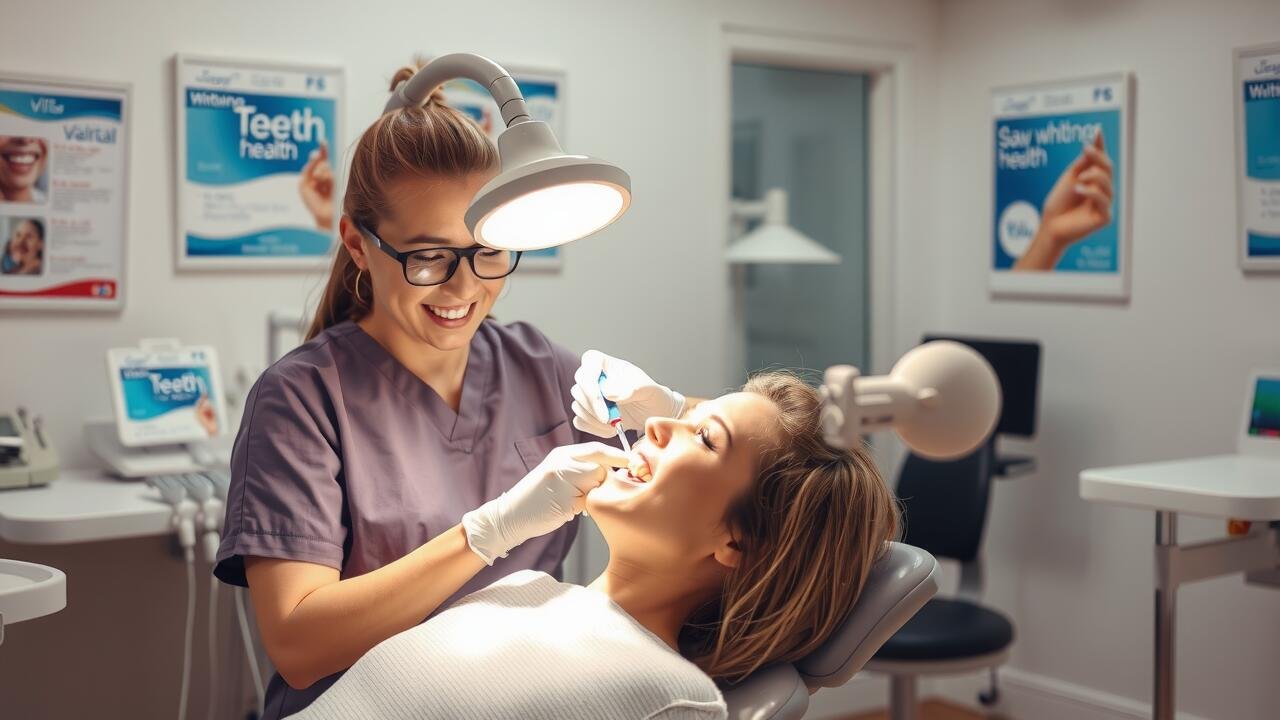
Whitening Toothpastes
Whitening toothpastes are popular products designed to help remove surface stains from teeth, primarily caused by food and beverages. These pastes typically contain mild abrasives that assist in polishing the teeth and additional ingredients that can help break down stains. While they may not yield dramatic results, many users find that consistent use can lead to a brighter smile over time. Consumers often look for options like “Teeth Whitening near me” to find local stores or dental offices offering effective products.
Despite their convenience, the effectiveness of whitening toothpastes can vary significantly. Some formulations may contain chemical agents like hydrogen peroxide, which can enhance whitening results, while others rely solely on mechanical cleaning. It’s essential to manage expectations, as results from using whitening toothpaste alone are often subtle and gradual. For those seeking more noticeable change, professional treatments may be necessary, though incorporating a quality whitening toothpaste into one’s daily routine can still provide beneficial maintenance.
Do They Really Work?
Whitening toothpastes have gained popularity as an accessible means to enhance one’s smile. They typically contain mild abrasives and chemical agents aimed at removing surface stains caused by food and beverages. While some users notice a brighter appearance over time, the effectiveness can vary widely based on the product’s formulation and individual expectations. Results may not be as pronounced as those achieved through professional treatments or specialized whitening procedures.
For those searching for localized solutions, using keywords like “Teeth Whitening near me” can help identify options tailored to specific needs. Many people may find that while whitening toothpastes can be beneficial for maintaining brightness, they might not provide the deep whitening effect sought after in more stubborn discoloration cases. Understanding the limitations of these products will guide consumers in selecting the best method for their desired outcome.
Cost Considerations for Teeth Whitening
When considering teeth whitening options, understanding the costs involved is essential for making an informed choice. Professional treatments often come with a higher price tag due to the expertise of dental professionals and the use of advanced technology. Factors like the type of procedure, the reputation of the dentist, and geographical location can influence the final amount. For those looking to save money, at-home kits and over-the-counter products typically offer more budget-friendly alternatives, but their effectiveness can vary significantly.
Another factor to keep in mind is the long-term costs associated with maintaining a bright smile. Regular touch-ups might be necessary after initial treatment, which can add to overall expenses. It is advisable to research local options, including searching for “Teeth Whitening near me” to compare prices and services available in your area. Assessing both immediate and ongoing costs will help in choosing the best solution that fits your budget and desired results.
Comparing Professional vs. At-Home Options
When considering teeth whitening options, many individuals weigh the pros and cons of professional treatments against at-home solutions. Professional whitening procedures, often conducted by dentists, typically provide quicker and more dramatic results. These treatments utilize stronger bleaching agents and can be customized to address specific staining issues. For those seeking immediate improvement, searching for “teeth whitening near me” can connect them with qualified dental providers who can offer tailored services.
On the other hand, at-home whitening kits provide a more cost-effective alternative. These kits include over-the-counter products such as strips, gels, and trays, making them convenient for individuals looking to brighten their smiles at their own pace. However, results may take longer to achieve compared to professional treatments. While at-home options can be effective, the level of whitening may vary depending on the product’s strength and the user’s adherence to the application instructions.
Risks and Side Effects
Teeth whitening treatments can lead to some risks and side effects. Common issues include tooth sensitivity and gum irritation, particularly with stronger bleaching agents. Sensitive teeth may react to temperature changes or certain foods, while gum tissues can become inflamed if they come into contact with whitening gel. It’s essential to follow instructions carefully to minimize these adverse reactions.
When considering a teeth whitening option, searching for “Teeth Whitening near me” can help identify local professionals who can provide guidance on the safest methods. Consulting a dentist ensures a tailored approach that considers individual dental health, which can further reduce potential risks. Knowing what to expect during treatment can also help in preparing for any temporary side effects.
What to Expect During Treatment
When considering teeth whitening treatments, understanding the process can alleviate any apprehensions. Professional whitening sessions typically involve an initial consultation where dental professionals assess the health and condition of your teeth and gums. After this evaluation, the whitening treatment, which may include the application of a bleaching agent in a controlled environment, begins. This procedure usually lasts about an hour, allowing for deep penetration of the whitening agents to achieve noticeable results.
For those opting for at-home whitening kits, the experience varies depending on the product used. Most kits come with detailed instructions outlining how long to wear the trays or strips for optimal results. Users should be aware that while at-home treatments are convenient, they may require consistent application over several days or weeks. People searching for “teeth whitening near me” often find local dentists or cosmetic specialists who can guide them through the process and provide tailored options.
FAQS
What are whitening toothpastes, and do they really work?
Whitening toothpastes are specially formulated to remove surface stains from teeth. They typically contain mild abrasives and chemical agents that can help brighten your smile. However, their effectiveness can vary, and they may not provide results as dramatic as professional treatments.
How much does teeth whitening cost?
The cost of teeth whitening can vary widely. Over-the-counter products like whitening strips or toothpastes can range from $10 to $50, while professional whitening treatments at a dentist’s office can cost anywhere from $300 to $1,000 or more, depending on the method used.
What are the differences between professional and at-home teeth whitening options?
Professional teeth whitening is performed by a dentist and typically uses stronger bleaching agents, resulting in faster and more noticeable results. At-home options, while more convenient and affordable, may take longer to show results and are generally less potent.
Are there any risks or side effects associated with teeth whitening?
Yes, some common risks and side effects of teeth whitening include tooth sensitivity, gum irritation, and uneven results. It’s important to follow instructions carefully and consult with a dental professional if you have concerns.
What should I expect during a teeth whitening treatment?
During a professional whitening treatment, you can expect a consultation followed by the application of a bleaching agent to your teeth. The process may take 30 minutes to an hour, and some patients may experience sensitivity afterward. Results can often be seen immediately after treatment.


